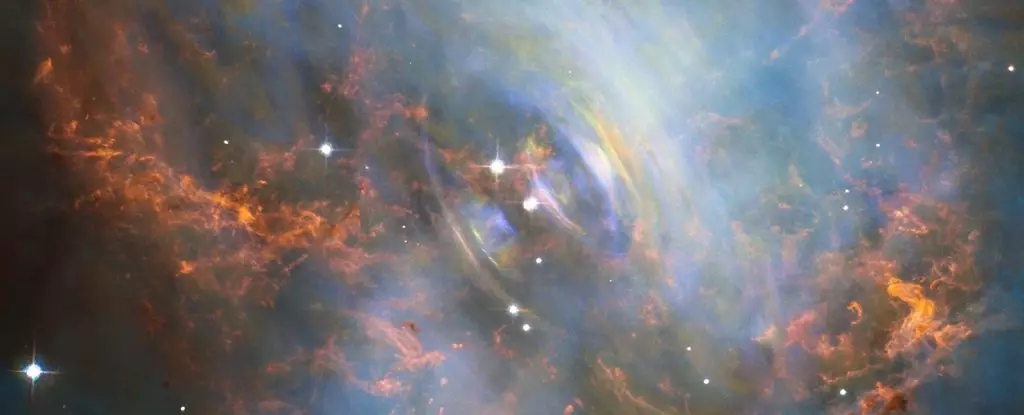At a staggering distance of approximately 6,200 light-years from Earth lies one of the universe’s most intriguing remnants of stellar evolution: the Crab Pulsar. Formed from the violent death of a massive star in a supernova explosion that was visible from Earth in 1054 CE, this neutron star continues to baffle astronomers with its complex behavior and striking emissions. Among these emissions is a peculiar signal dubbed the “zebra pattern,” a perplexing feature that has garnered attention for nearly two decades. Far from being a simple curiosity, the Crab Pulsar’s emissions have implications for our fundamental understanding of astrophysics and wave behavior in extreme environments.
The zebra pattern is characterized by its spiky, zig-zag appearance in spectral graphs, representing a strange arrangement of wavelength emissions. Astronomers first identified this unusual phenomenon in 2007, adding another layer to the already rich lore surrounding the Crab Pulsar. Unlike any other celestial body, the pulsar generates this unique signature predominantly in one emission component while emitting broader pulses that are typical of pulsar behavior. This stark contrast piques curiosity and leads to questions about the physical processes fueling this extraordinary display.
Recent breakthroughs suggest that theoretical astrophysicist Mikhail Medvedev from the University of Kansas may be on the verge of unraveling the mystery of the zebra pattern. His hypothesis centers on the idea that the zebra pattern results from interference created by light diffraction occurring due to variable plasma densities within the pulsar’s magnetosphere. Medvedev draws from principles of wave optics, which differ fundamentally from classical geometrical optics. In geometric optics, light behaves like rays, cast into defined shadows, whereas wave optics allows for light to bend and interfere, resulting in observable diffraction patterns.
By utilizing a wealth of observational data from years of study, Medvedev applied wave optics to calculate the densities of plasma interacting with radio waves emitted from the pulsar. His model uncovered how the varying densities and magnetic fields create interference patterns, contributing uniquely to the identifiable zebra stripes.
The implications of this research extend from the Crab Pulsar itself into broader categories of astrophysical study. If confirmed, Medvedev’s model could serve as a groundbreaking tool for measuring plasma densities in similar environments across the universe. Pulsars, with their extreme conditions, offer a unique laboratory for testing fundamental theories in physics, including quantum mechanics and general relativity. The application of diffraction models could illuminate our understanding of not just pulsars, but other astrophysical entities where magnetic fields and plasma dynamics are significant.
What makes the Crab Pulsar particularly compelling is its relative youth, being merely a thousand years old by astronomical standards. This vitality allows it to be more energetic and dynamic than many other known pulsars, making it an ideal subject for study. However, while the Crab Pulsar is unique, Medvedev notes that hundreds of other pulsars exist, some sharing similar young characteristics. It opens the door to investigating their emission patterns through the lens of this newly proposed model.
The ongoing exploration of the Crab Pulsar shines a light on the astrophysical intricacies that lie beyond our terrestrial understanding. As researchers probe deeper into the interaction of electromagnetic waves with increasingly complex plasma environments, the potential for groundbreaking discoveries only grows. With the rapid advancements in observational technology and theoretical modeling, we are on the brink of unveiling secrets that have held sway over astronomers’ minds for decades.
In sum, the journey of understanding the Crab Pulsar and its enigmatic zebra pattern serves not just to satisfy intellectual curiosity, but also advances the broader field of astrophysics. As we continue to dissect the behaviors of neutron stars and their emissions, we inch closer to a more nuanced understanding of the universe and our place within it. Each new piece of evidence collected from magnificent cosmic phenomena like the Crab Pulsar contributes to the broader puzzle of the cosmos, offering tantalizing glimpses into the complex mechanics at play in the universe we inhabit.


Leave a Reply